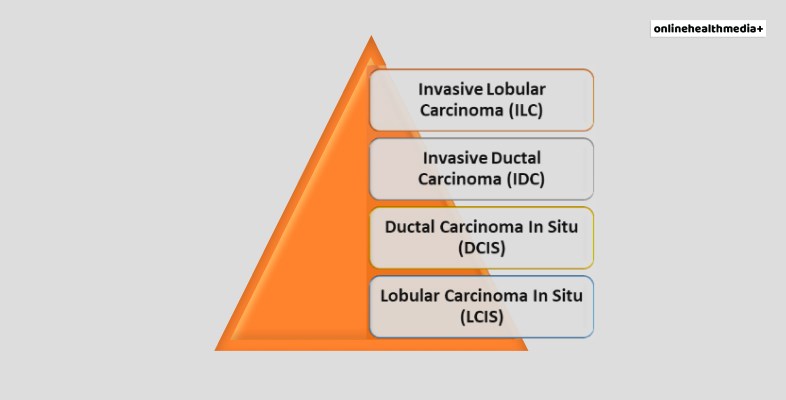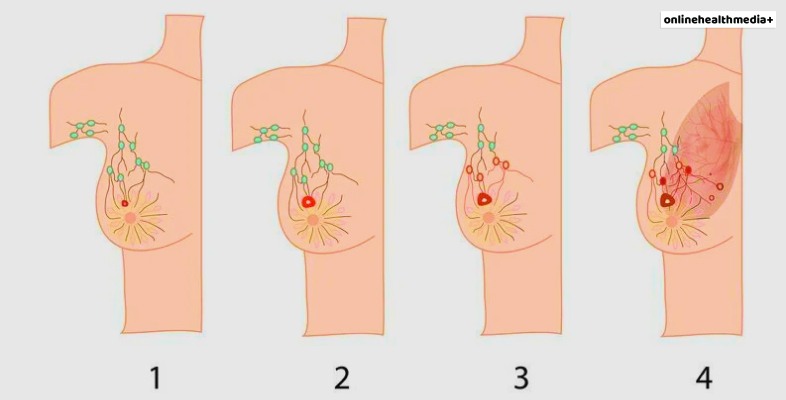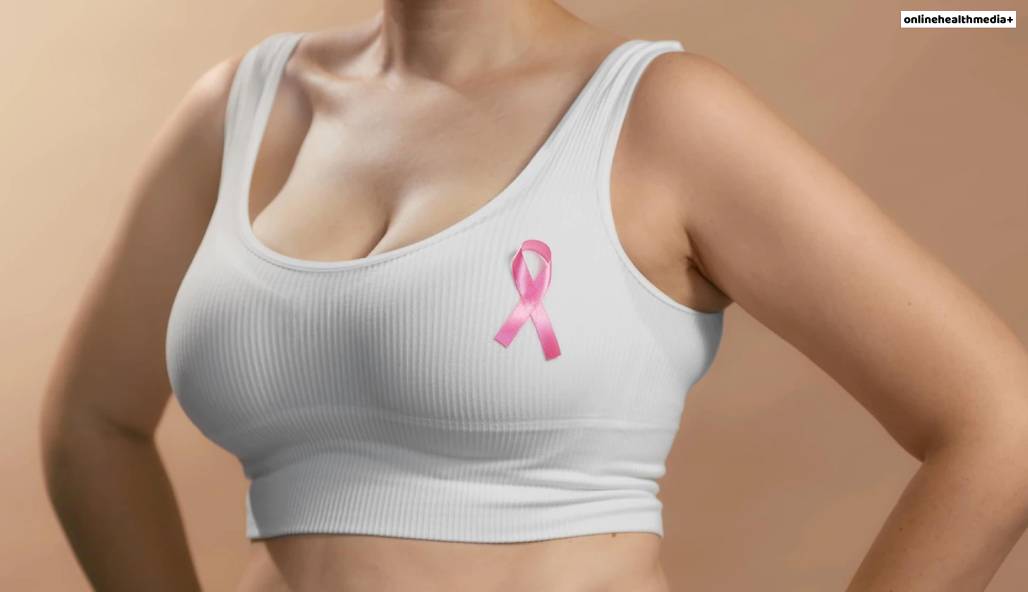Breast Cancer: Symptoms, Types, Stages, Treatments, FAQs, More
Cancer is a leading cause of death worldwide, causing nearly 10 million deaths in 2020 alone. It occurs when genetic changes called “Mutations” happen that control the cell growth. Out of the most common cancers in the world, Breast cancer is one of the leading types. It’s cancer that grows in the breast cells, typically in the breast ducts, fatty tissues, or in either lobule.
If you are looking for deets on this deadly disease, you have arrived at the right place. Continue reading to get the detailed medical information and see pictures.
Breast Cancer – The Background
Breast cancer is the most common form of cancer in the United States after skin cancer. It’s not only limited to women but also among men; it’s fairly common.
Now the question is, “ what causes breast cancer? ”
Well, doctors know that it occurs when some cells in breasts start to grow abnormally. These fatal cells tend to divide more rapidly in comparison to the normal cells creating a lump or mass. Furthermore, these cells metastasize (spread ) across the breasts to the lymph nodes and other body parts.

Signs Of Breast Cancer
The pink breast cancer ribbon might seem to be cute but it says a lot.
Every type has its own symptoms, which could be similar or different. Some common and frequent symptoms of breast cancer include:
- A tissue thickening or lump that feels unusual.
- Breast pain.
- Bloody discharge from the nipples.
- Discolored or red skin, just like allergies.
- Swelling in all or parts of the breast.
- Swelling or lump under your arm.
- Sudden change in the size or shape of the breast.
- Inverted nipples.
Bonus Point: Did you know that in the early stages of breast cancer, there might not be any major symptoms. A super small tumor can or cannot be felt, but a mammogram can detect the abnormality.
Types Of Breast Cancer

In medical terms, there are different types of breast cancer that fall under two main categories – Invasive and No-Invasive. Check out the main divisions under these two below:
1. Lobular Carcinoma In Situ (LCIS)
Lobular Carcinoma in situ cancer develops in the milk-producing glands of the breasts.
2. Ductal Carcinoma In Situ (DCIS)
Ductal Carcinoma in situ cancer remains confined in the breast ducts.
3. Invasive Ductal Carcinoma (IDC)
Invasive ductal carcinoma is the most frequent one. It begins from the milk ducts and invades the adjacent tissues gradually.
4. Invasive Lobular Carcinoma (ILC)
This first develops in the breast lobules and then invades the nearby tissues.
Some other less common types are:
- Phyllodes Tumor: This rare form grows in the breasts’ connective tissues.
- Angiosarcoma: This grows in the lymph vessels and blood vessels of the breast.
- Paget Disease: It grows in the nipple ducts but with time it affects the areola of nipples.
- Inflammatory Breast Cancer: Inflammatory breast cancer is one of the rarest and most aggressive. diseases where the cancerous cells block all the lymph vessels in the breast skin.
Read More: Cancer Prevention: 7 Ways to Reduce Your Risk
Stages Of Breast Cancer
The division of the stages of breast cancer depends on the size of the tumors and symptoms. For example, stage 2 breast cancer symptoms will be much different and worse than stage 1 breast cancer symptoms.
Generally, it has 5 stages, from stage 0 to stage 4.
1. Stage 0 Breast Cancer Symptoms
Cancer cells in DCIS remain within the ducts and don’t spread into any nearby tissues.
2. Stage 1 Breast Cancer Symptoms
It has two groups:
- Stage IA: Cancer is smaller than 2 cm and has not invaded outside the breast area.
- Stage IB: Cancer spreads to the lymph nodes and the size is between 0.2 to 2 mm in size
3. Stage 2 Breast Cancer Symptoms
The two main groups are
- Stage IIA: The tumor is still small; larger than 4 cm but smaller than 5 cm. It may or may not spread to the lymph nodes.
- Stage IIB: Tumor acquires the size of a lime or a walnut and may or may not have invaded the lymph nodes.
4. Stage 3 Breast Cancer Symptoms
There are 3 groups in this advanced Stage:
- Stage IIA: The tumor is found in upto 9 lymph nodes in the underarm towards the collarbone.
- Stage IIB: The tumor has entered around the breast skin or into the chest wall.
- Stage IIC: The tumor is in the 10 or more lymph nodes and has laid out below or above the collarbones.
5. Stage 4 Breast Cancer Symptoms
The cancer cells have spread through the lymph nodes far away from the breast to other body parts.

Bonus Point: Do you know that breast cancer awareness month is on the way? In 2022, it begins on Saturday 1st October and ends on Monday, 31st October.
Breast Cancer Diagnosis
In order to determine whether the breast cancer symptoms are a benign condition or truly cancerous, doctors do a series of physical check-ups.
The tests for an accurate breast cancer diagnosis are as follows:
- Mammogram: It’s a special type of X-Ray screening to detect breast cancer.
- Ultrasound: A breast ultrasound makes use of the sound waves for taking a picture of the deep tissues in your breast.
- Others: Doctors also suggest Breast Biopsy and MRIs, etc.
Breast Cancer Treatment
The breast cancer treatment plans depend on the stages, invasion, size of the tumor, and grade. Some common treatment forms are as follows:
- Surgery:
Doctors cut the cancer tissue through operations.
- Chemotherapy:
It’s a drug treatment to destroy cancer cells, although it has extremely harmful side effects.
- Hormonal Therapy:
Using special hormones, the cancer cells are blocked from growing further.
- Radiation Therapy:
This involves the use of highly energetic X-rays to destroy cancer cells.
- Biological Therapy:
Biological therapy works with the immune system of your body to fight cancerous cells.
- Medicines:
The anticancer antibiotics are doxorubicin, epirubicin, mitomycin, adriamycin, salinomycin, and fluoroquinolones.

Risk Factors
There are a plethora of risk factors that aggravate breast cancer in women. These include
- People with BRCA 1, and BRCA2 gene mutations are more prone to develop cancer in breasts.
- Family history matters a lot in this case. If any of your close female relatives like grandmother, sister, daughter, or mother, you have an increased risk.
- Excessive alcohol disorder increases the risk.
- Women above 55 years are more likely to face invasive breast cancers.
- If your menstruation started before 12 years, you have a fairly increased risk.
- In case you have undergone hormonal therapies like postmenopausal progesterone and estrogen, you have a higher risk.
Bonus Point: Breast cancer survival rates are improving globally. According to the latest research, the last 5-year recovery rate is 90% while the 10-year rate is 84%.
Self-Preventive Treatments
Some small steps and you will be able to lower your breast cancer likelihood:
- Maintain A Healthy Weight: Lose your weight by reducing your calorie intake.
- Be Physically Active: Aim for 150 minutes of moderate aerobic activity per week.
- Breast Feed: Longer breastfeeding equals better protective effects.
- Limit Alcohol, Fast Foods, And Postmenopausal Hormone Therapies: Restrict alcohol or fast foods to stay out of the potential risks. Also, limit the combination of hormonal therapies.
- Do A Vigilant Self-Examination: A self-exam is the best way for detecting traces of cancer growth in the breasts. Check out the attached video to know the techniques.
Frequently Asked Questions (FAQs):
• New lump in the armpit
• Swelling of the parts of the breast
• Irritation in the breast skin
• Flaky or redness in the nipple area.
The four types of breast cancer are as follows: Lobular Carcinoma in situ, Ductal Carcinoma In Situ, Invasive ductal carcinoma, and Invasive Lobular Carcinoma (ILC)
The highest time span a breast cancer can grow undetected is 10 years, according to medical research.
Metastatic Breast cancer is the most dangerous and serious breast cancer as they have the highest spreading tendency.
Be Aware, Ladies!
Breast cancer awareness month is just 5 months away, although people in the world are increasingly becoming aware of this fatal disease. Selecting the right breast cancer treatment might be hard. Hence, speak with your doctor, and he will guide you on the treatment options best according to your symptoms.
Have you been recently diagnosed with breast cancer? Don’t be anxious or scared, take proper guidance from an oncologist and you will be out of danger.
Spread the word and save some lives.
Wanna share your thoughts on this? Meet us in the comment section below.
Read Also:
• 4 Self Care Tips for Cancer Survivors
• What Are Bug Bites? Know About The Types And Symptoms
• What Is Bipolar Disorder? Symptoms, Treatment, And Prevention



